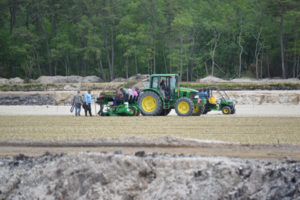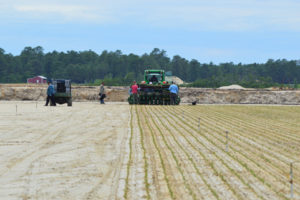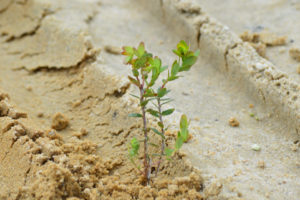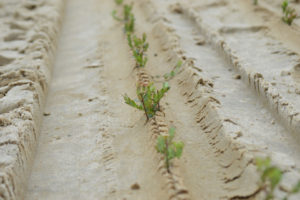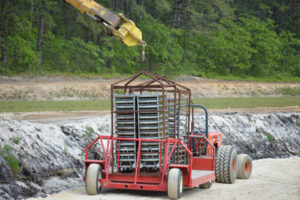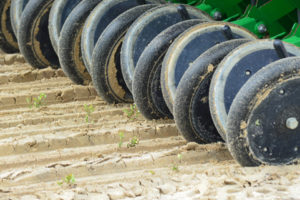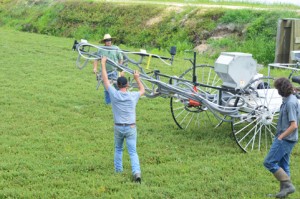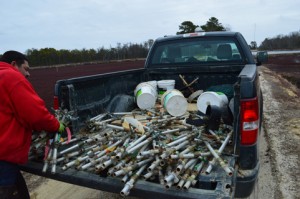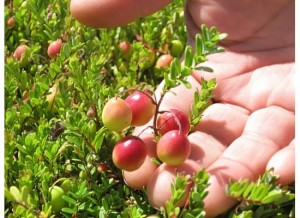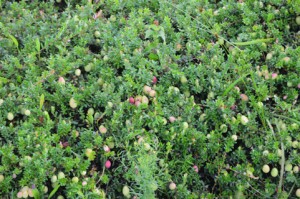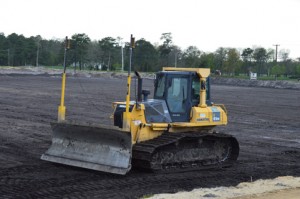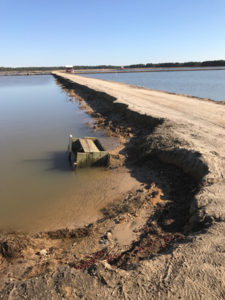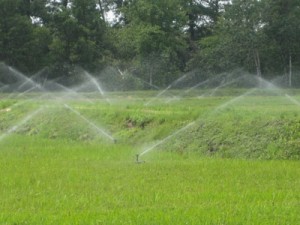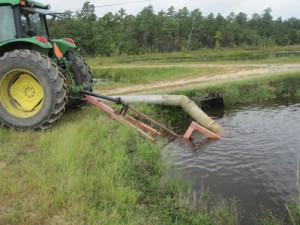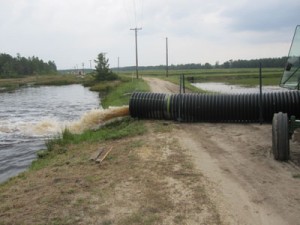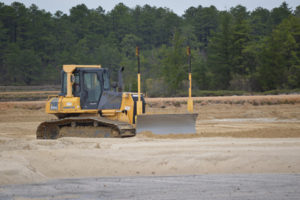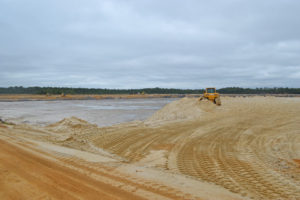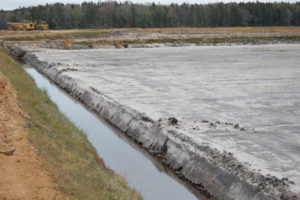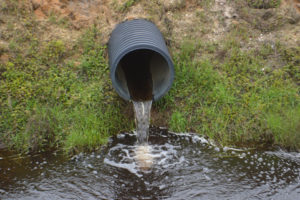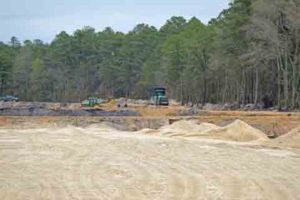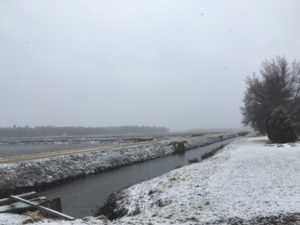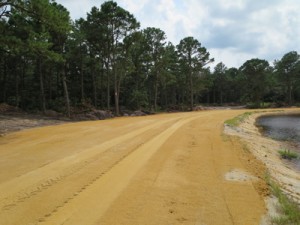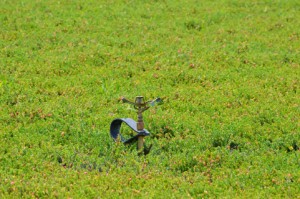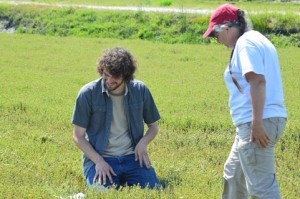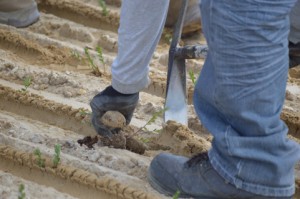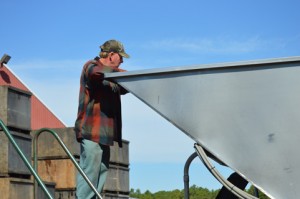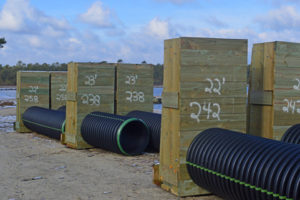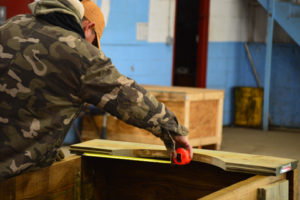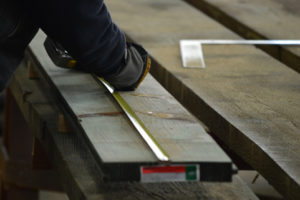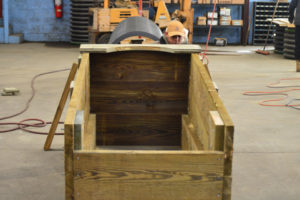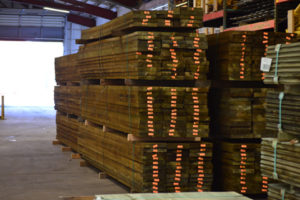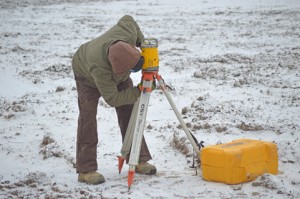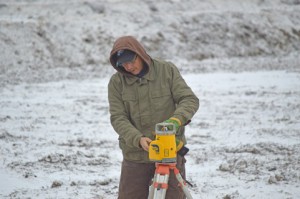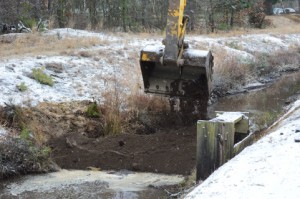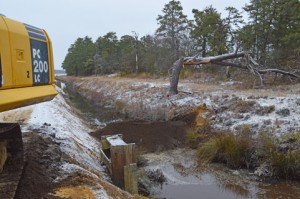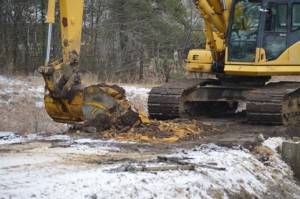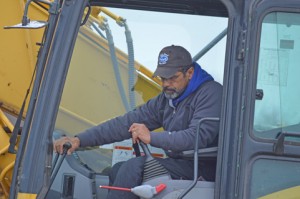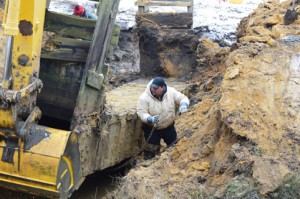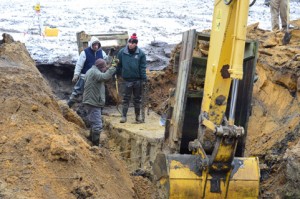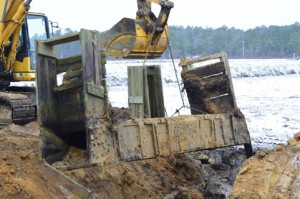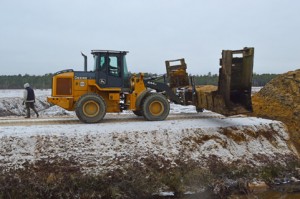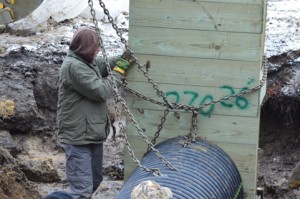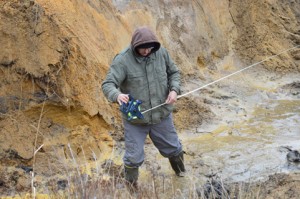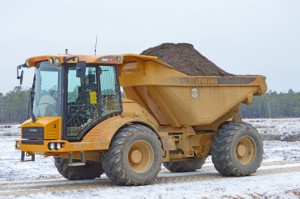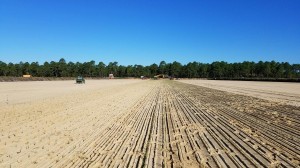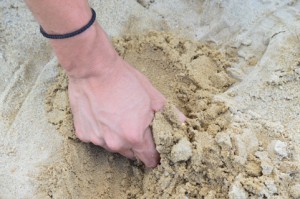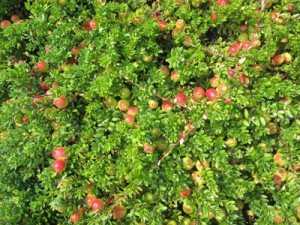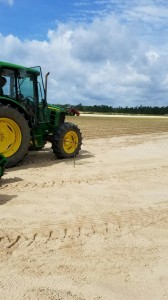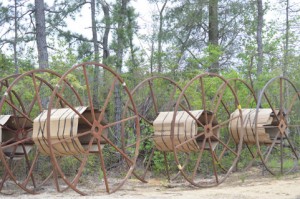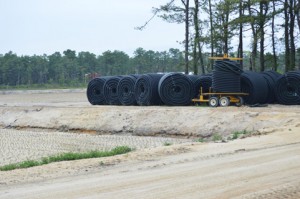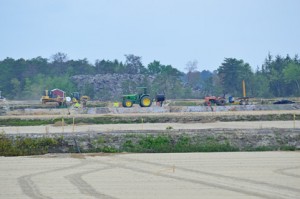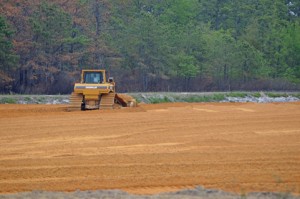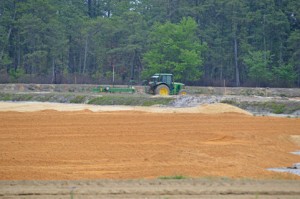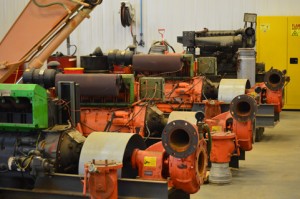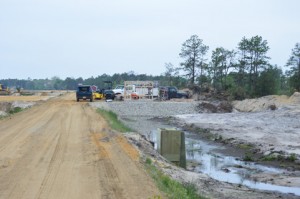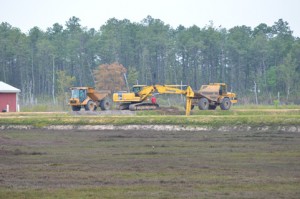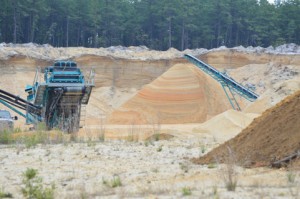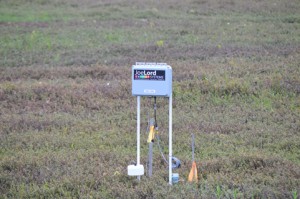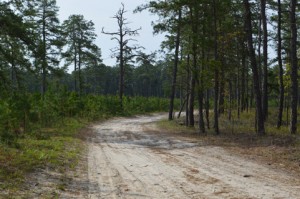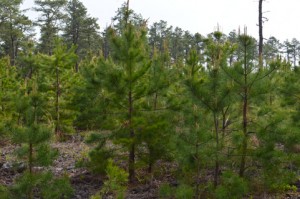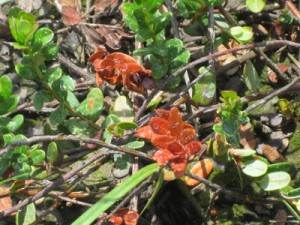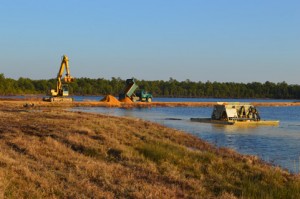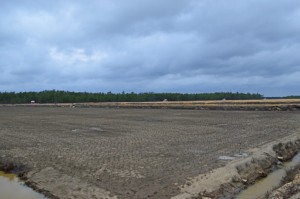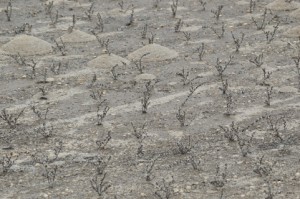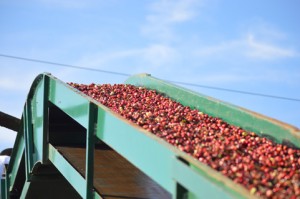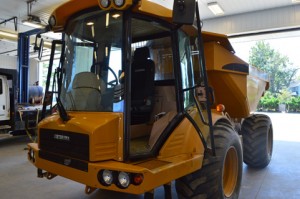A couple of weeks ago we mentioned that the team is getting ready to start planting at Mule Island, one of our newly renovated bogs!
As we mentioned then, the team is planting the Mullica Queen variety. Per Rutgers, “Mullica Queen offers excellent yield potential with equal or higher color than Stevens,” and while we currently only have one Mullica Queen bed that’s attained full growth, it’s been a highly productive one.
There are two methods of planting: conventional propagation, which means pressing mowed vines or prunings directly into the bogs to be established; and rooted cuttings, which means planting plants with roots already established. Pine Island has used both methods in the past, but mainly we’ve moved on to using rooted cuttings. Another concern with planting is implementing an irrigation program, both with ground water and sprinklers, that provides moisture for vine growth without causing excessive soil saturation, which can lead to favorable conditions for phytopthora, which in turn can lead to fruit or root rot. Pine Island uses both ditches and sprinklers for irrigation. During the early spring, after the winter flood is removed, irrigation is usually covered by our frost protection program. However, concerns for adequate soil moisture should not be forgotten during frost season. Several warm, sunny days without rain or frost irrigation can result in the need for irrigation. Checking the soil yourself is extremely important; tensiometers are good, but it’s important to learn the hands-on method, as well.
Our team has made some scheduling changes as well; we’ve experimented with timing over the past few years and this year decided to try planting each newly renovated system as soon as it’s complete. “We’re going to put the plants in early, see how they do, then we’re just going to keep going every month,” COO Bryan vonHahmann said back in April. “During our last reno we planted 60 acres in a month, which is a lot of work. Planting in the heat is pretty stressful on the crew, as well, so trying to do it in one week intervals instead as well as moving the timing helps with that, too.”
The process remains the same: rooted cuttings are taken from the cart and loaded onto the planter. Team members seated on the planter drop the vines into the carousel and then the vines are distributed into the pre-dug furrow. The planter is followed by other crew members, who make sure that the vines have been placed correctly.
Running the planting operation is a true challenge: coordinating everything, getting the right plants at the right time with the right people, constantly adjusting the planters, and identifying problems and how to fix them. But Matt Stiles, in his second planting season, is doing very well. The Mule Island system is going to take a little longer than expected due to the rainstorms this week, but if there’s one thing you learn early in agriculture, it’s that you can’t control the weather!

